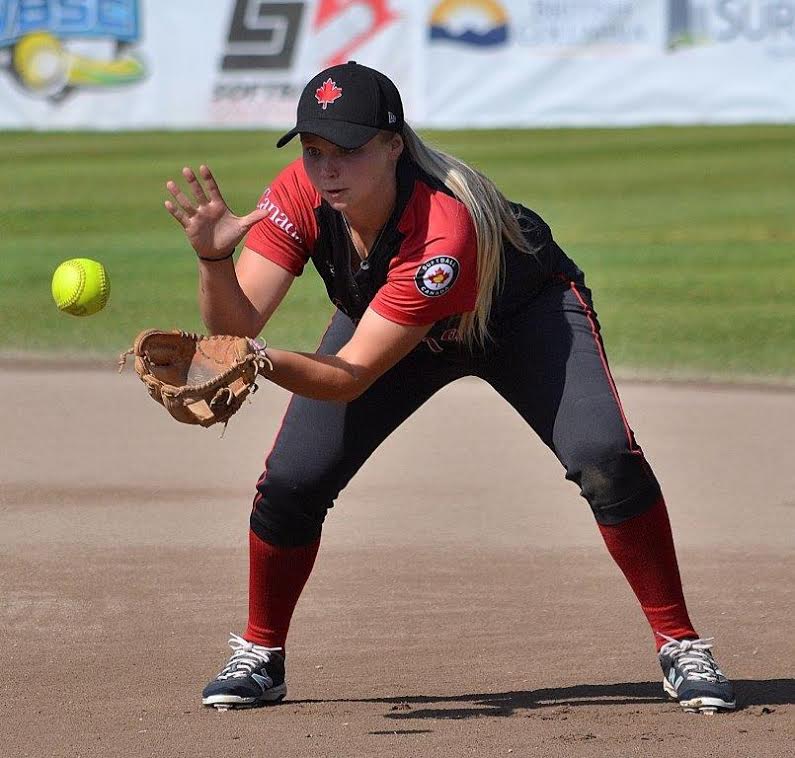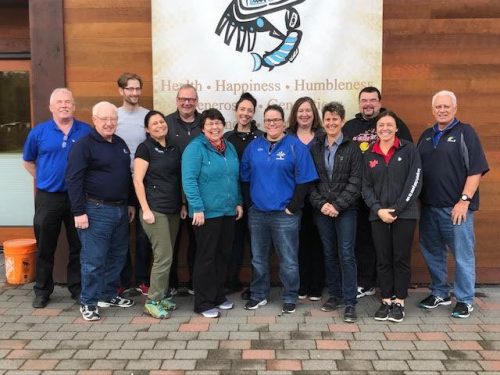Softball BC commits to Indigenous Long-Term Participant Development Pathway implementation
 Amidst a global reckoning about systemic racism in North America and beyond, sport organizations are increasingly looking for ways to create in-roads into under-serviced communities and to create better cultural awareness. Softball BC is one example of a provincial organization putting in the time to incorporate the Indigenous Long-Term Participant Development Pathway (ILTPD) into its programming, stemming from the Calls to Action of the Truth and Reconciliation Commission, to better attract and retain Indigenous talent.
Amidst a global reckoning about systemic racism in North America and beyond, sport organizations are increasingly looking for ways to create in-roads into under-serviced communities and to create better cultural awareness. Softball BC is one example of a provincial organization putting in the time to incorporate the Indigenous Long-Term Participant Development Pathway (ILTPD) into its programming, stemming from the Calls to Action of the Truth and Reconciliation Commission, to better attract and retain Indigenous talent.
Under the guidance and mentorship of the Indigenous Sport, Physical Activity and Recreation Council (I·SPARC) and Sport for Life, Softball BC has introduced their Timbits program to 12 new communities as part of a larger strategy to grow the sport and build infrastructure throughout the province of B.C. Two years ago they created an ILTPD Committee that aimed to work collaboratively with their Indigenous partners.
They’ve even adopted a new logo, designed by Indigenous artist Jamin Zuroski.
“Indigenous nations and communities have been playing softball and fast pitch for forever and a day, and they’re absolutely phenomenal athletes. What we’ve done traditionally is reach out and try to get them to join our mainstream membership, but many of the things we’ve tried in the past were unsuccessful,” said Rick Benson, executive director of Softball BC.
“We decided that we wanted to give this program a try, not for the purpose of increasing membership but to promote softball in communities that don’t have the resources or tools to develop their athletes, and invest money without any expectation of return.”

So far five provincial sport organizations have engaged with the ILTPD implementation mentoring process, made possible by the BC Sport Participation Program funding, including Softball BC, Canoe Kayak BC, BC Wheelchair Basketball Society, BC Lacrosse Association, and Basketball BC. According to Benson, the process has reinvigorated Softball BC’s commitment to inclusion, making sure their sport is available to everyone in the province. In the case of Indigenous athletes, that means taking into account the historic barriers they’ve faced and making sure they have a pathway to both high performance and enjoying the sport for life.
“When we first started this process, I was a little nervous and unsure of what the outcome would be. The first thing that struck me with I·SPARC was how they went out of their way to make us comfortable in the environment. They did an amazing job of making us feel welcome, and the thing that set things off right is they did a Blanket Exercise for our organizing committee that was so powerful that all of our team members were deeply emotionally affected. That really changed our perspective on how we were going to approach this work,” he said.
Now that he’s engaged with the mentorship process, Benson said his vision of a properly implemented ILTPD would include community teams feeding into both the mainstream and Indigenous systems, while proactively recognizing and honouring the cultural differences, ancestry and spiritualities of Indigenous members. By bridging some of the gaps between the diverse communities spread all over the province, they would be ultimately creating a stronger foundation for the sport overall. That means a larger pool of players striving for excellence and high performance.
“We’ve been investing money to send our softball experts out to remote communities, our contractors and facilitators, and the Board has agreed to take a portion of our membership fees and government funding to have them go into these communities, build a new network and a sense of working together to achieve, and really introduce them to the sport,” he said.
“We agreed that we would reach out to five communities each year, and in each community we would do repeated visits to work with the young athletes, aged six to 10, while working with the coaches to teach them about physical literacy and how we run our programs. We then give them equipment and other resources. Then we follow up by going back and reviewing what happened, fixing any weaknesses and building the program.”
Now that they’ve committed to this implementation process and begun introducing new programming, Softball BC faces the task of getting all of the communities and teams in the province up to date on their new vision.
“We’ve been trying to make in-roads, and it’s sometimes a struggle. This sort of cultural change is not something where you flip a switch and everything’s different. We still face pushback, but what’s gratifying is how readily people bought into this once they understood what the objective was, people who were influencers within our community. They did get on board, and they have taken the right steps, and if we stay consistent I think we can achieve that culture shift,” he said.
The end result of this work will be that more Indigenous members in B.C. will get a chance to engage with quality sport, whether through their organization or through smaller grassroots teams. But what’s most important to Benson is that all athletes have the chance to be a part of the team, without fear of being not accepted or understood.
“This is truly something we believe in and it’s been inspiring for us over the last two years to be a part of this program.”
*Photo courtesy of Softball BC
